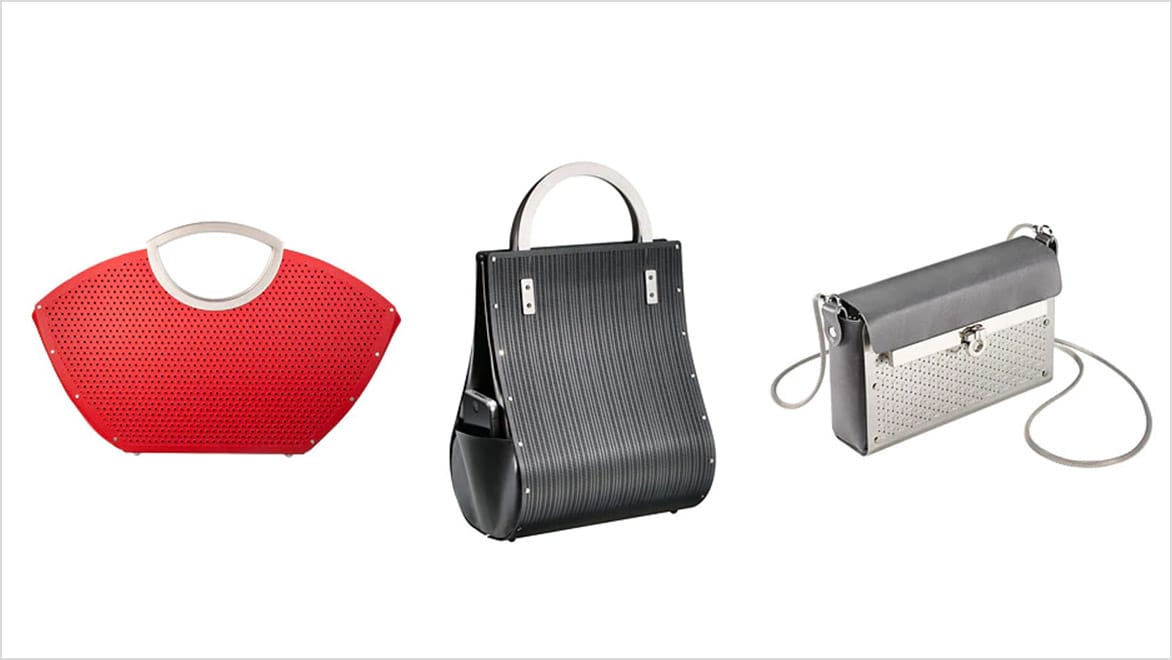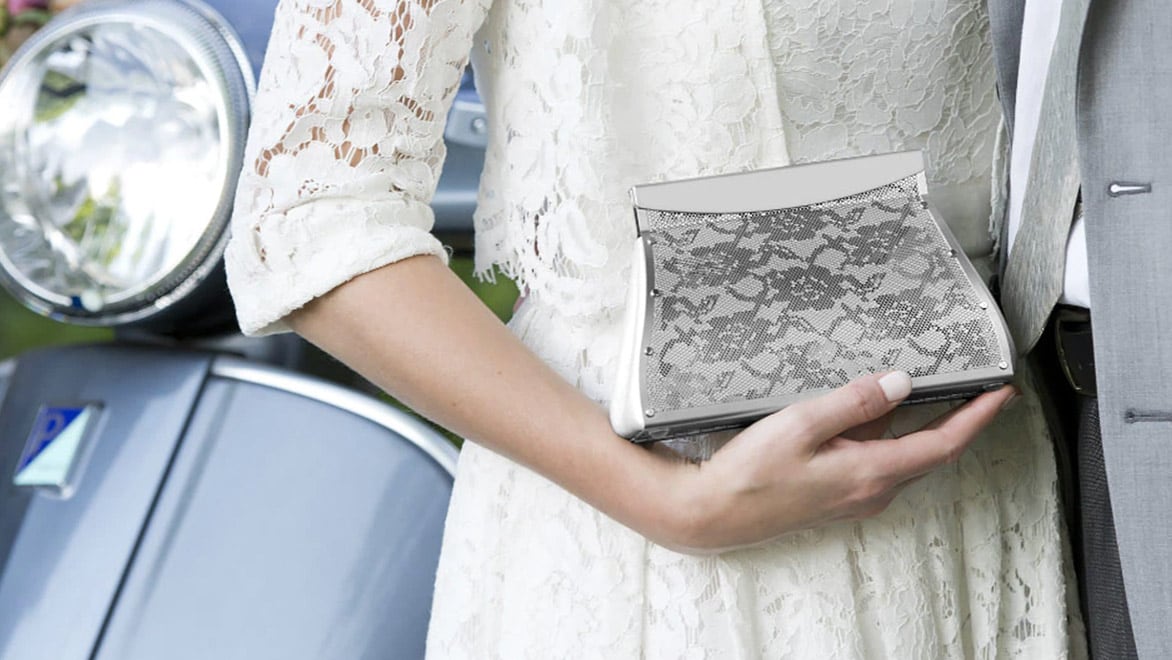WENDY STEVENS
AutoCAD LT helps bring handbag business back from the ashes
AUTOCAD LT CUSTOMER SUCCESS STORY
Share this story
Leaving the past behind and going digital
For more than 30 years, Wendy Stevens has built an illustrious career and business designing and producing metal handbags by hand. A devastating fire changed everything when her entire workshop—and years of templates she created—were destroyed. Stevens decided to learn AutoCAD LT and quickly realized the advantages of digital design with increased speed and accuracy for her handbags.
Rebuilding a career in metal—one template at a time
Thirty years ago, the East Village in New York City was a decidedly grittier and more industrial place. With the combination of living there, hanging out with artists and working in a nightclub, Wendy Stevens had an artistic inspiration: create handbags made out of sheet metal.
With no experience in metalworking, Stevens set out learning the craft—acquiring equipment and even asking plumbers in her building for tips. Over time, she refined her handmade bags into, quite literally, works of art featured in museums and in Vogue magazine.

Assortment of Wendy Stevens' metal handbag designs. Photos by Stuart Tyson.
After leaving New York City in 1997, Stevens moved to rural Pennsylvania, setting up her business and studio in a converted barn. She stayed “low-tech” until a devastating fire 12 years ago. It wiped out her entire workshop and all of the metal templates she had hammered and created over the years; she had never done any drawings. As she looked to rebuild her business, she met with a man who owns and operates a photochemical-machining company that etches sheet metal (and now etches her metal today). He gave her a big reality check.
“He took one look at my work and said, ‘I know for a fact you're going to have to do your own drawings—I am not doing them for you.' He was super clear about that,” Stevens says. “It felt like a slap in the face at first, but my husband said, ‘He's totally right. Your designs are so particular. You have got to do the drawings.'”

Metal lace clutch designed and made by Wendy Stevens. Photo by Miana Jun.
Digital realisation creates new workflow
It became readily apparent that it was time to embrace technology. Stevens enrolled in an AutoCAD LT online training class and went on to find other resources and help at a local university to learn the software. Within a year, she went from destroyed templates to completely digitised resources—and an entirely new approach to her business.
Stevens continues to form every bag by hand with the help of a press brake, a series of slip rolls, a hand brake and an assortment of small hand tools. But AutoCAD LT freed her to explore new design opportunities she simply could not do before. The photoetching possibilities with metal have completely transformed how she works. Today she has more than 140 handbag designs in AutoCAD LT.

Metal lace clutch design in AutoCAD LT. Courtesy of Wendy Stevens.
“I was hand-cutting the profiles of all these bags and then punching every single hole for rivets,” Stevens says. “I work in millimetres to get everything so precise. Before, the amount of time it took to cut and punch every rivet and hole was immense. Now, once the design is created in AutoCAD LT and the photo tooling is made from the drawing, I can order the material from the etcher and receive the parts ready for fabrication. It's an incredibly efficient process to have the parts etched. Really and truly, the way I was doing things before was like the Dark Ages. Everything is figured out beforehand now.”
Experience the power of AutoCAD LT
Create 2D drawings faster and with more precision with a subscription to AutoCAD LT.